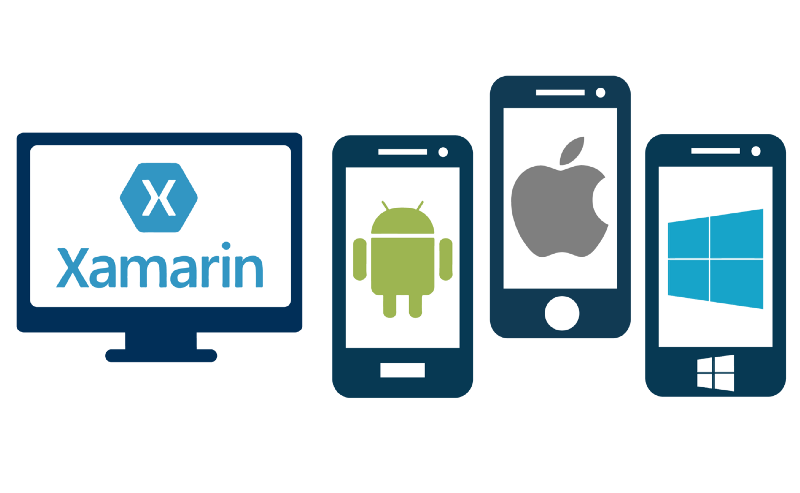In the ever-evolving landscape of mobile application development, creating apps that run seamlessly across multiple platforms is essential for reaching a broader audience and maximizing the potential user base. One of the most popular tools for achieving cross-platform development is Xamarin. By leveraging Xamarin, developers can build high-quality applications for iOS, Android, and Windows using a single codebase, significantly reducing development time and effort. In this blog post, we will explore the capabilities of Xamarin and delve into the process of building cross-platform apps while taking a closer look at how Betelgeuse, a fictional startup, utilized Xamarin to develop its flagship mobile application.
Understanding Xamarin:
Xamarin is a powerful framework that allows developers to write native mobile applications for multiple platforms using C# and the .NET framework. It provides a single codebase that can be shared across iOS, Android, and Windows platforms, enabling developers to write code once and deploy it everywhere. Xamarin offers full access to native APIs and UI controls, ensuring that apps built with Xamarin have the same look, feel, and performance as their native counterparts.
Introducing Betelgeuse:
Betelgeuse is a fictional startup that aims to revolutionize the way people discover and book outdoor adventures. The Betelgeuse team envisions a mobile application that provides users with a seamless experience across different devices and operating systems. To achieve this goal, they decide to adopt Xamarin for their app development needs.
Benefits of Xamarin for Cross-Platform Development:
Code Reusability: With Xamarin, developers can write a single codebase in C#, which can be shared across iOS, Android, and Windows platforms, reducing development time and effort.
Native Performance: Xamarin allows developers to access native APIs and UI controls, ensuring that apps built with Xamarin have the same performance and responsiveness as native applications.
Unified Development Environment: Xamarin provides a unified development environment that allows developers to write, test, and debug their code using familiar tools such as Visual Studio and Visual Studio for Mac.
Wide Ecosystem Support: Xamarin has a vast ecosystem of libraries, plugins, and tools that simplify common development tasks and enable developers to integrate third-party services and functionalities seamlessly.
Building the Betelgeuse Mobile App with Xamarin:
The Betelgeuse team begins the development process by creating a project in Visual Studio using Xamarin.Forms, a UI toolkit that allows for the creation of cross-platform user interfaces from a single codebase. They design the app’s user interface using XAML, a markup language that simplifies UI development, and implement the app’s logic and functionality using C#.
One of the key features of the Betelgeuse app is its interactive map, which allows users to explore nearby outdoor activities and attractions. To implement this feature, the Betelgeuse team utilizes Xamarin.Forms.Maps, a cross-platform mapping library that provides access to native mapping APIs on each platform.
Another essential aspect of the Betelgeuse app is its seamless integration with social media platforms, allowing users to share their outdoor adventures with friends and followers. To achieve this, the Betelgeuse team leverages Xamarin.Auth, a cross-platform authentication library that simplifies the process of integrating OAuth-based authentication with popular social media platforms such as Facebook, Twitter, and Instagram.
Testing and Deployment:
Once the development of the Betelgeuse app is complete, the team thoroughly tests the app on different devices and platforms to ensure compatibility and performance. Xamarin provides robust testing tools such as Xamarin Test Cloud, which allows developers to run automated UI tests on thousands of real devices in the cloud, helping identify and fix bugs and issues before releasing the app to users.
After testing, the Betelgeuse app is ready for deployment. Xamarin supports various deployment options, including publishing to app stores such as the Apple App Store, Google Play Store, and Microsoft Store, as well as enterprise distribution and sideloading for internal testing and distribution.
Conclusion:
Xamarin is a powerful framework for cross-platform development that enables developers to build high-quality mobile applications for iOS, Android, and Windows using a single codebase. By adopting Xamarin, developers can streamline the app development process, reduce time to market, and reach a broader audience across different devices and operating systems.
The Betelgeuse app serves as an example of how Xamarin can be used to create innovative and feature-rich mobile applications that deliver a seamless user experience across multiple platforms. With Xamarin, developers have the tools and resources they need to bring their app ideas to life and make a meaningful impact in the mobile app market.
In conclusion, Xamarin empowers developers to build cross-platform apps with ease, making it an invaluable tool for modern app development. Whether you’re a seasoned developer or just starting, Xamarin provides the flexibility and scalability needed to turn your app dreams into reality.
So why wait? Start building your cross-platform app with Xamarin today and join the ranks of successful developers who are revolutionizing the mobile app industry.

